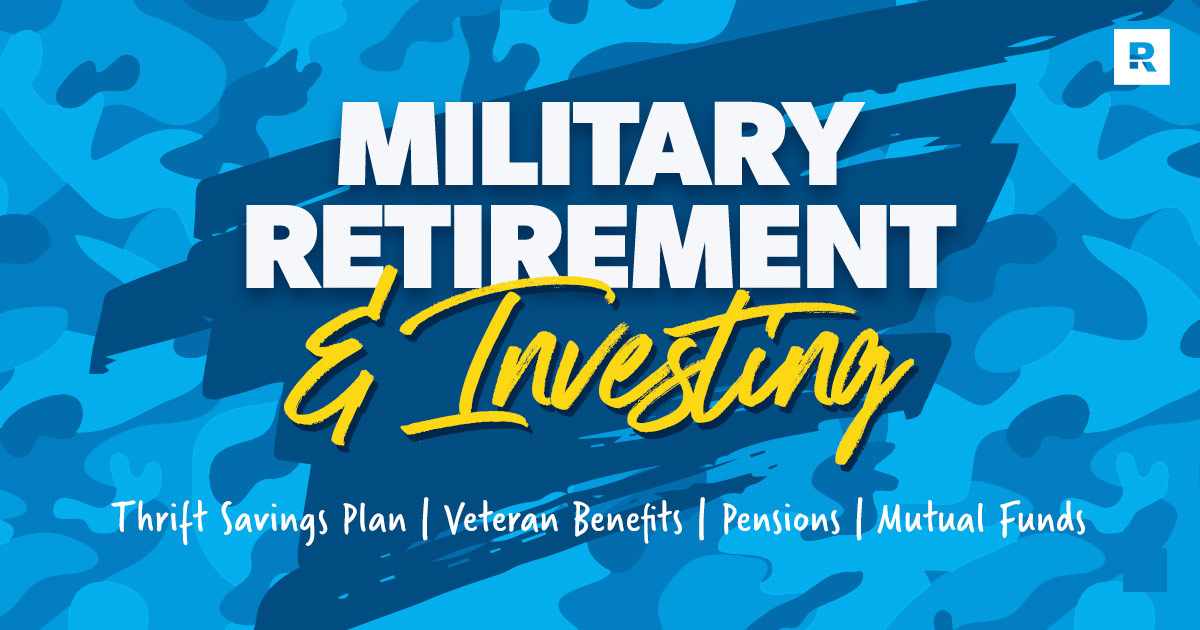Retirement Planning for Military Service Members
6 Min Read | Apr 15, 2025

Investing can be tricky for anyone but especially if you’re in the military. There are all kinds of things to keep straight—like pensions, veteran benefits and the Thrift Savings Plan. It’s enough to make your head spin if you let it. But unpacking all things military retirement doesn’t have to get that complicated. Don’t worry, we’ve got your six. Let’s jump in the trenches and get down to everything you need to know.
When Should I Start Investing?
First things first here—don’t start investing until you’re ready. And being “ready” doesn’t mean you finally feel okay about jumping in the stock market or that you have a fortune to invest. You should hold off investing until you’re out of debt (except for your house) and you’ve saved up an emergency fund of 3–6 months of expenses. In Baby Steps language, this means you’ve finished up Baby Steps 1, 2 and 3 and are now on to Baby Step 4.
What Are Military Retirement Benefits?
These retirement benefits are for those who served in the military through active duty, Reserves or Guard for at least 20 years. The military uses a few different things to figure out how much retirement will be paid out. Things like the amount of time served, year of enlisting, disability status and the type of retirement all have an impact on the payout of retirement benefits.1 If you think you’re eligible for military pension, check with the U.S. Department of Veterans Affairs.
How Much of My Income Should I Invest?
Once you’re ready, jump in and start investing 15% of your income. You can spread this out across a match program like the Thrift Savings Plan (if that’s an option you have), good growth stock mutual funds and even your pension. The point is, you need to be stashing away that full of amount of 15%. So don’t just say “Well, I’ll have my social security check” and leave it at that.
What Is the Thrift Savings Plan?
The Thrift Savings Plan (TSP) is kind of like the government’s version of a 401(k)—and it’s open to not only the military but federal workers too. Just like a 401(k), the Thrift Savings Plan lets you contribute money from your paycheck—which make things super easy for you.
Market chaos, inflation, your future—work with a pro to navigate this stuff.
If you’re part of either the Federal Employees Retirement System (FERS) or the Blended Retirement System (BRS), your retirement contributions will be matched up to a certain amount. That means if you put in $300 a month, they’ll invest $300 a month. Getting a match on your investment money is a pretty sweet deal. Be sure you go after that full match amount and don’t leave any money on the table. It’s free money!
If your plan doesn’t offer a match, then start with the Roth IRA outside of there. It’s better to have a nonmatching Roth IRA that grows tax-free than a nonmatching TSP that grows tax deferred. Tax-free is always better than tax deferred. Trust us. The great news is, most people are taking advantage of that match money. Around 85% of those contributing to a TSP account are putting in at least 5% of their pay to get the full match.2 Hooray!
Keep Boosting Your Investing Know-How
Every two weeks, the Ramsey Investing Newsletter will send you practical insights, easy-to-use resources, and the latest investing news. All explained in plain English.
What Funds Should I Invest in With the Thrift Savings Plan?
All right, let’s break down the different fund options and where your money should go in the TSP Funds. Now brace yourself, we’re about to dive into some more investing talk and a lot of numbers.
When it comes to the Thrift Savings Plan, there are five different individual fund options to pick from:
- The Government Securities Investment (G) Fund
- The Fixed Income Index Investment (F) Fund
- The Common Stock Index Investment (C) Fund
- The Small Capitalization Stock Index (S) Fund
- International Stock Index Investment (I) Fund
You can go ahead and toss out the G and F funds since they don’t give you much room for growth. Instead, stick with the C, S and I Funds. We recommend you break up your investing portfolio like this:
- 80% in the C Fund (common stock fund), which tries to match the Standard & Poor’s 500 index’s performance
- 10% in the S Fund (small-cap stocks), an option with aggressive stocks that can offer a high rate of return
- 10% in the I Fund (international), an international fund that invests in stocks from overseas companies
You can also do the 60-20-20 option—that’s 60% in the C Fund, 20% in the S Fund, and 20% in the I Fund. The idea here is to really focus on the C Fund and then toss a bit at the other two funds. We know all of that is a real mouthful. But don’t let yourself get lost in the weeds. Reach out to an investing pro with the heart of a teacher who will explain everything to you in plain English you understand.
Is Military Retirement Taxed?
Yep, it sure is. And it seems like a lot of people get confused by this. VA disability benefits are not taxable, but military retirement pay is fully taxable.3 So just be sure you have the right information so there aren’t any surprises later on down the road. And remember, when it comes to the Thrift Savings Plan, if you have a tax-free option on the table when you enroll, take it.
What Happens to Military Retirement Pay When You Die?
We know, talking about kicking the bucket is never a fun topic. Still, you need to be in the loop about what happens to your retirement money. Your military retirement pay will end after you die unless you’ve enrolled in the Survivor Benefit Plan (SBP).4 This plan lets you pass along your military retirement income to your spouse and dependents. But remember, this doesn’t happen automatically—you have to enroll in it.
Can I Invest Outside of My Military Retirement Accounts?
First up, make sure you’re taking advantage of all the investing options offered to you through the military. You want to make sure you’re not leaving any money on the table there. After that, sure—you can definitely invest outside of your own military retirement. Short-term investing is going to be your best bet here. But remember, when it comes to short-term investing, it’s best to play it safe. Look to invest in some good growth stock mutual funds.
Are you still with us after all those numbers we tossed at you? Investing can feel like a sticky web to untangle—especially when you add in the military factor. But don’t go it all alone. Connect with one of our SmartVestor Pros today and get the help you need to invest for the future.
Make an Investment Plan With a Pro
SmartVestor shows you up to five investing professionals in your area for free. No commitments, no hidden fees.
This article provides general guidelines about investing topics. Your situation may be unique. To discuss a plan for your situation, connect with a SmartVestor Pro. Ramsey Solutions is a paid, non-client promoter of participating Pros.



